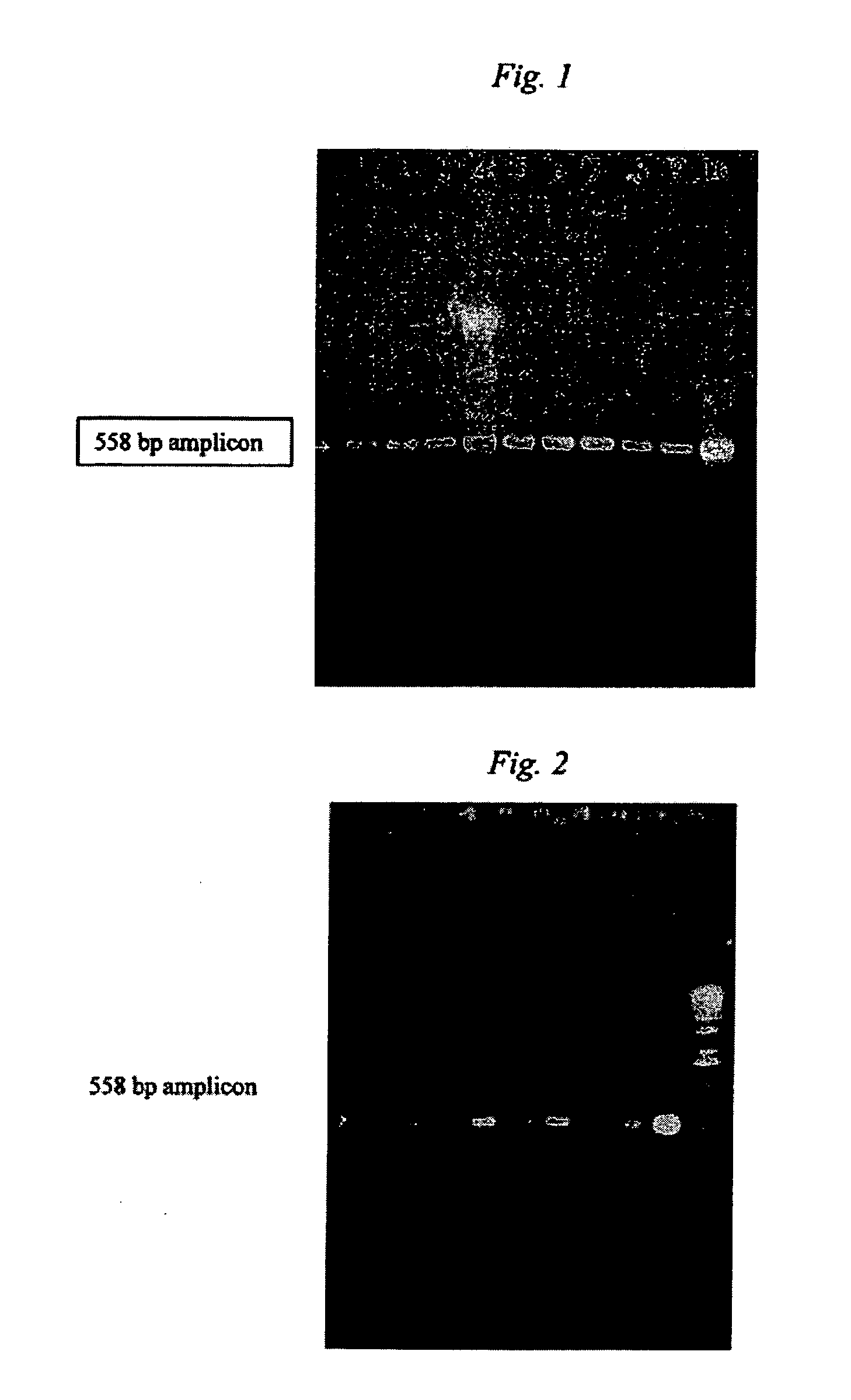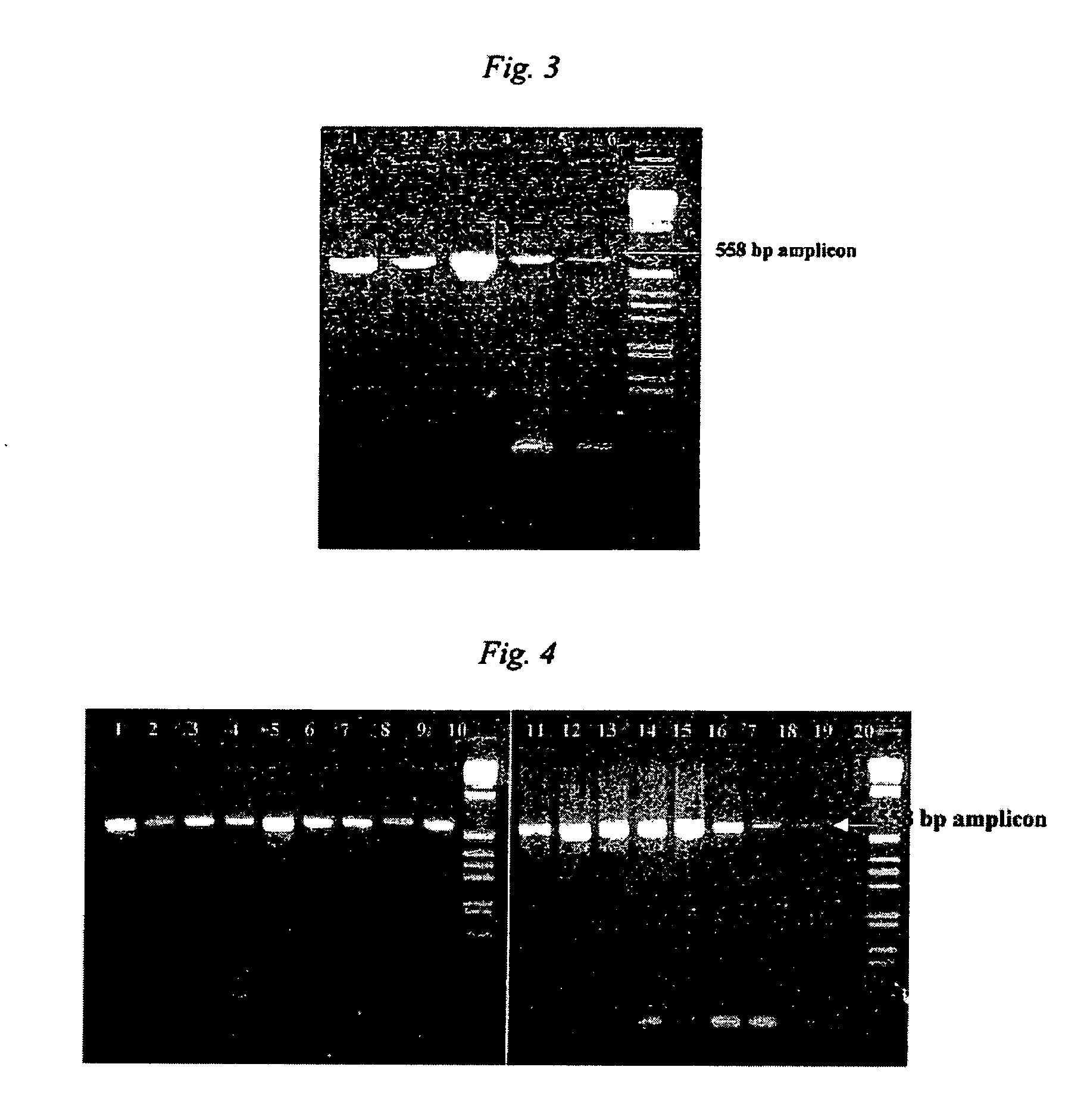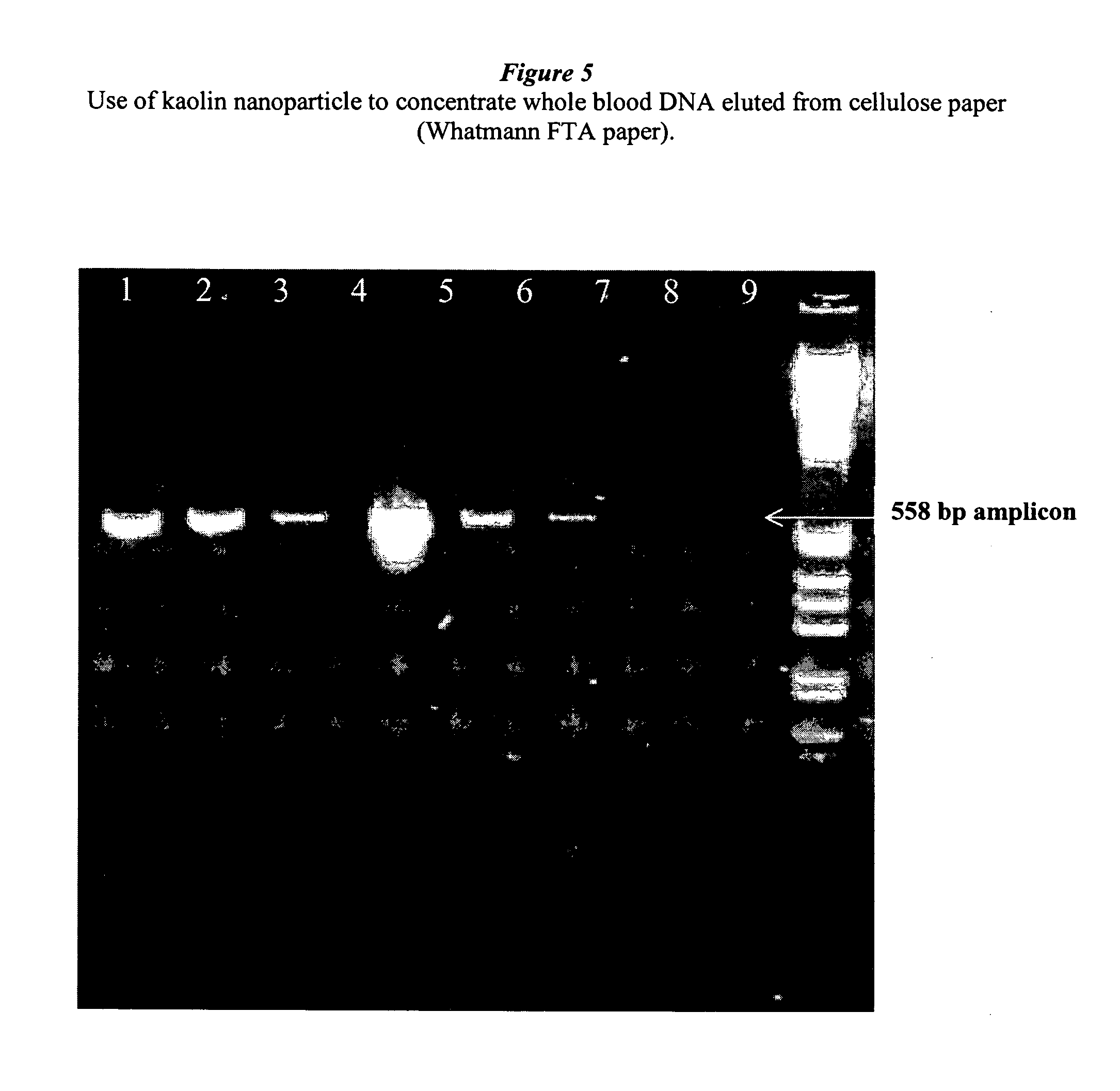Nanoparticles for manipulation of biopolymers and methods of thereof
- Summary
- Abstract
- Description
- Claims
- Application Information
AI Technical Summary
Benefits of technology
Problems solved by technology
Method used
Image
Examples
example 1
Process to Make Washed Kaolin Nanoparticles
[0183] Washed kaolin nanoparticles were prepared for use in adsorption chromatography by first suspending the kaolin (CAS# 1332-58-7) nanoparticles, (Englehard, ASP ULTRAFINE), in N,N,dimethyl formamide (DMF, CAS#68-12-2) at a ratio of 0.5 to 1 g particles (dry weight) to 9 mL DMF. This colloidal suspension was incubated for a minimum of 16 hrs. The nanoparticles were washed by a sedimentation-resuspension process by (1) sedimenting the nanoparticles out of suspension by centrifugation at 4000 G for 15 min; resuspending the particles by adding 1 mL of liquid phase (for this process it was water) per 5 grams (dry weight) of particle-sediment and mixing to form a thick slurry; followed by adding 9 mL of liquid phase (water) per gram (dry weight) to the slurry and mixed to form a confluent nanoparticle suspension. For the washed kaolin particles, per 10 mL of this nanoparticle suspension was added and mixed 1 mL of 5 M sodium chloride solutio...
example 2
Process to Produce Epoxy Silane Coated Kaolin Nanoparticles in DMF Suspensions
[0184] For both the epoxy silane coated kaolin nanoparticles were produced by the following methods in kaolin nanoparticles (Englehardt, ASP Ultrafine) suspended in DMF at a concentration of 100 mg per milliliter and incubated for minimum of 16 hrs at room temperature. The nanoparticles were sedimented from suspension by centrifugation at 4000 G for 30 min, resuspended in DMF at ratio of 1 g to 8 ml DMF. For PEI coated particles, to the 8 mL of the DMF suspension was added 2 mL of a 10% solution 3-glycidoxytrimethoxysilane (epoxy-silane) in DMF and mixed then incubated for minimum of 16 hrs. These epoxy-silane particles were washed by sedimentation-resuspension process (see Experiment 1), using DMF as the liguid phase, and this process was repeated twice, though the final concentration of epoxy-silane coated particles was 125 mg / mL (dry weight of kaolin particles).
example 3
Process to Produce PEI-Epoxy Silane Coated Kaolin Nanoparticles in DMF Suspensions
[0185] 2 mL of a 10% water solution of polyethylenimine of either a branched polymer of 750,000 MW (CAS#25987-06-8) or 25,000 MW (CAS#9002-98-6) was added to 8 mL of epoxy coated kaolin nanoparticles (Experiment 2) and mixed and incubated for a minimum of 16 hrs. The PEI-epoxy coated particles were then washed three times by the sedimentation-resuspension using water as the liquid phase. The final particle concentration for these suspensions of these polyethylenimine-epoxy silane coated kaolin particles was 50 mg (dry weight of kaolin nanoparticles) of particles per mL.
PUM
| Property | Measurement | Unit |
|---|---|---|
| Length | aaaaa | aaaaa |
| Diameter | aaaaa | aaaaa |
| Diameter | aaaaa | aaaaa |
Abstract
Description
Claims
Application Information
 Login to View More
Login to View More - R&D
- Intellectual Property
- Life Sciences
- Materials
- Tech Scout
- Unparalleled Data Quality
- Higher Quality Content
- 60% Fewer Hallucinations
Browse by: Latest US Patents, China's latest patents, Technical Efficacy Thesaurus, Application Domain, Technology Topic, Popular Technical Reports.
© 2025 PatSnap. All rights reserved.Legal|Privacy policy|Modern Slavery Act Transparency Statement|Sitemap|About US| Contact US: help@patsnap.com



